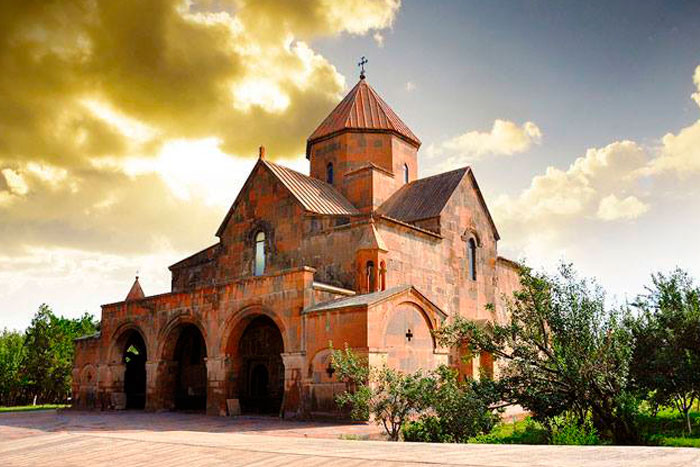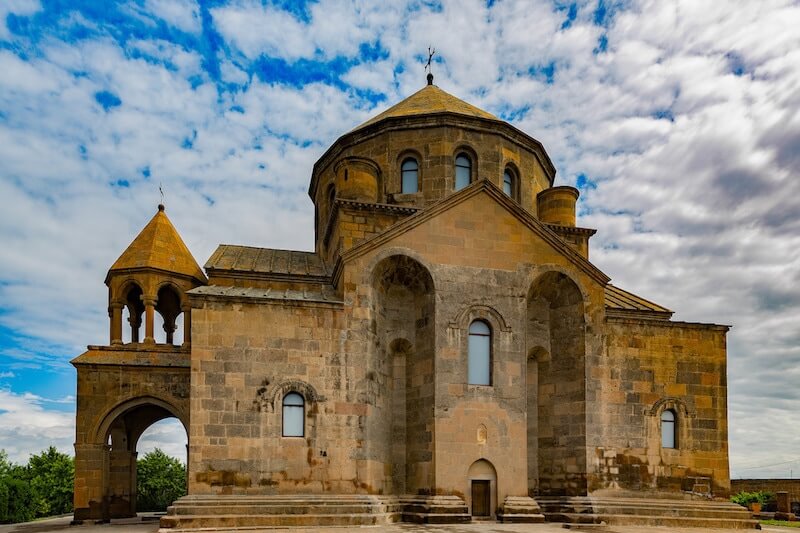Etchmiadzin Mother Cathedral is considered one of the earliest Christian buildings in the world. The church was built at the beginning of the fourth century, in 301-303, after the adoption of Christianity as a state religion, by the order of Gregory the Illuminator. It was built on the site of a pegan temple, symbolizing the transition from paganism to Christianity. Being the holy center of the majority of Armenians, Etchmiadzin was one of the important centers of not only religious, but also political, economic and cultural life in Armenia. This place of pilgrimage is one of the most visited places in Armenia. The cathedral, along with some important early medieval churches in the area, was included in the UNESCO World Heritage List in 2000.
The well-established transport infrastructure of Armenia allows to get to Etchmiadzin Mother Cathedral by a private car or with the help of various travel companies which offer regular excursions and tours to different sights of the country. Due to the geographical location of Etchmiadzin Mother Cathedral the trip will not seem long.
The high season in Armenia lasts for a long time due to the pleasant climate conditions. Warm days in Armenia start in March and last until late autumn; winter is usually snowless and not long. The high precipitation season is variable. The tourist season for Etchmiadzin Mother Cathedral depends on the weather conditions.
According to the Armenian historian Agathangelos Armenia's Catholicos saint Gregory the Illuminator had a vision of Jesus Christ descending from heaven and striking the earth with a golden hammer to show where the cathedral should be built. Hence, the Catholicos gave the church the name of Etchmiadzin ( etch "descent" + mi "only" + a (linking element) + tsin "begotten"), which translates to "the Descent of the Only-Begotten Son of God.
The cathedral was built above the flowing water. The water fills the miraculous well, located in the church. It has a depth of 7 meters. For many years, despite the weather or any other circumstances, the water in the church's well remains at the same level.
You can see a hardened scorpion, surrounded by the frescoes of angels on the arch of the belfry of the cathedral. This fact caused many assumptions. The image of the scorpion can be found on shoes of priests, mostly embroidered on heels. According to the psalms, scorpions and snakes symbolize the embodiment of evil. When the priest performs the liturgy, embodying Christ, he crushes the image of scorpion, depicted on the heels, which means the denial of all evil.
ST. GAYANE CHURCH
1 km

ST. SHOGHAKAT CHURCH
1,5 km

ST. HRIPSIME CHURCH
2 km
